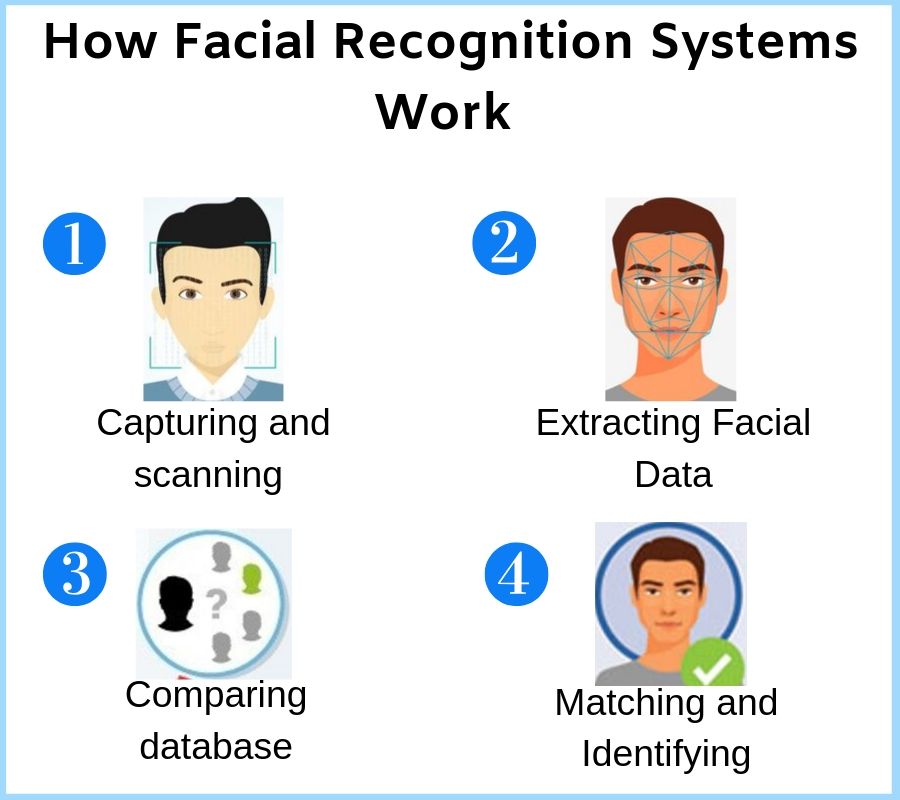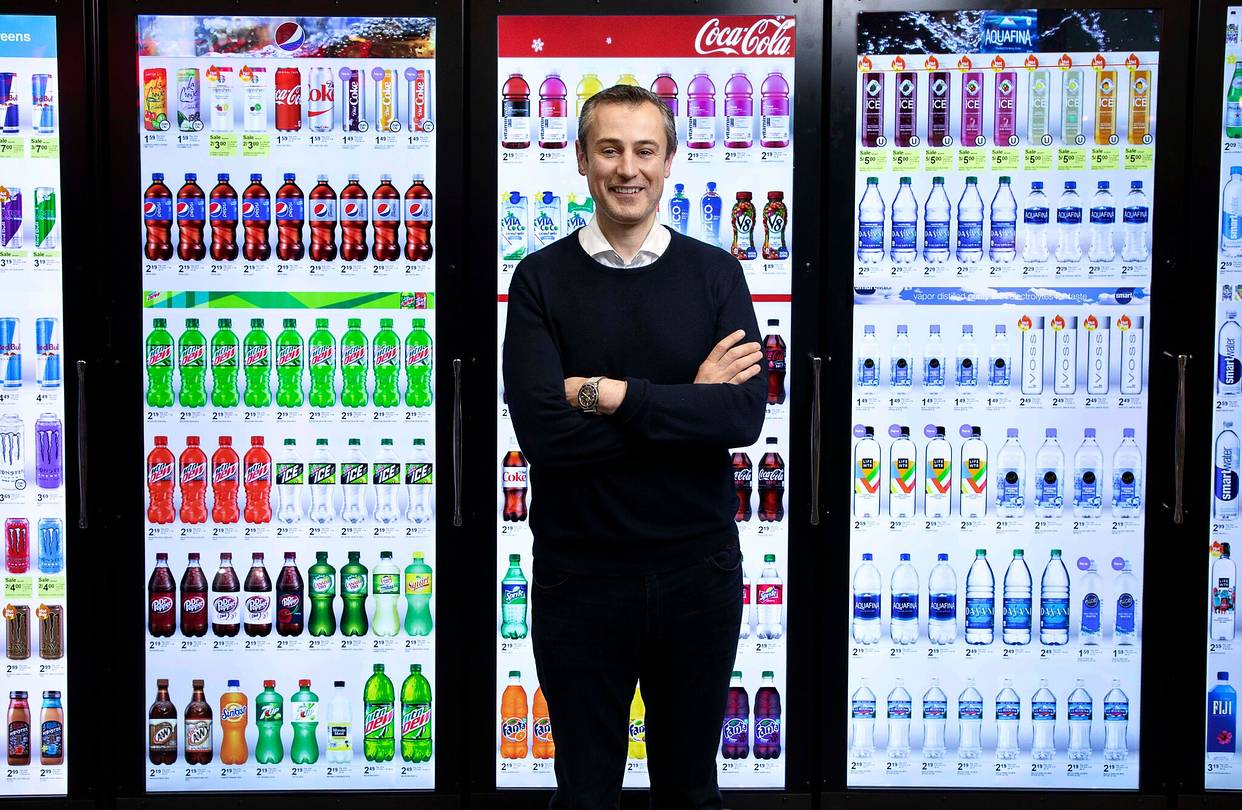Improving Business Operations | 5 Applications of Facial Recognition Technology
Sanam Malhotra | 23rd September 2019

Leading global businesses are exploring the far-reaching capabilities of facial recognition technology (FRT) to engage audiences and improve revenues. Facial recognition techniques are useful for strengthening security systems, building personalized products, tracking employee performance, and more.
However, similar to other artificial intelligence services, implementing facial recognition technology involves challenges arising from racial differences, image manipulation, etc. Overcoming such challenges is critical for the successful application of facial recognition technology.
This blog post holistically discusses five applications of facial recognition technology that accelerate business operations.
Understanding AI’s Role in Facial Recognition
Facial recognition technology (FRT) enables the identification and validation of human faces from images, videos, and other forms of graphics. The system traces facial features, contours, and texture to analyze the unique biometric and demographic details of individuals or groups of people.
FRT algorithms work by filtering large chunks of data including contextual 2D and 3D human images. Deep learning, an AI subset is essential for scanning and tracing distinct facial features from images in real-time. It generates a “unique face print” for each image by analyzing nose width, eye distance, and other features or ‘nodal points’.

Under the umbrella of AI development services, facial recognition is regarded as an effective surveillance mechanism. Apart from surveillance, AI researchers are exploring FRT to build smart devices, augment customer outreach efforts, manage access points and more.
Moreso, McKinsey Global Institute’s research suggests that by 2030, AI can deliver an additional global economic output of $13 trillion per year. Amazon, Facebook, Apple, and Google are few of the many giants who are massively investing in advanced facial recognition systems.
5 Business Applications of Facial Recognition Technology
1) Controlling Access
Enterprise IT systems store confidential employee and consumer data, which requires a secure infrastructure. It is, therefore, critical for businesses to guard entry gateways, restricted areas, and other crucial access points with advanced check-in ports.
Here are a few use cases of FRT for access control-
a) Security cameras with in-built facial recognition abilities can enhance surveillance systems.
b) Powered by deep learning, the cameras can identify, validate and differentiate between employees and perpetrators in real-time. Also, it is effective at detecting duplicates.
c) Large organizations can easily integrate FRT into turnstiles or baffle gates to ensure authenticated access into office premises.
Social media giant, Facebook launched DeepFace in 2014 to pioneer FRT applications. The FRT backed program demonstrated 97.25% accuracy in detecting if two faces in an image belong to the same person. It was followed by Google’s FaceNet that demonstrated a 100% accuracy score.
2) Tracking Attendance
Unlike biometric attendance systems that are prone to hacking, FRT-powered attendance tracking is more agile and immune to hacks. Jan Krissler, a prominent hacker, disrupted the fingerprint-enabled security systems by recreating German Defence Minister’s fingerprints, using her original images.
FRT-enabled attendance systems combat fraudulent entry and access by scanning facial features with granular precision. Inherent and distinct human features such as jawline, the distance between the eyes and mouth, etc. ensure high accuracy and error detection.
3) Enhancing Customer Services
Maintaining reputation and strong customer relations is no more limited to manual feedback and complaint redressals. After AI-powered chatbots, FRT is empowering businesses to serve better and ensure customer loyalty in the following ways-
a) Individual Face ID can be used by retailers and eCommerce businesses to provide personalized recommendations and shopping experience to shoppers. Also, FRT can be used to send custom notifications and deals to influence buying decisions.
b) Following the footsteps of card payments, businesses are now looking forward to conducting transactions with facial recognition systems.
Alipay, the financial arm of eCommerce giant Alibaba, has successfully installed facial payment systems in over 100 cities across China. The ‘Smile-to-Pay’ system enables China’s shoppers to purchase goods by merely turning their heads.
Also Read- The Transformative Power of Computer Vision Across Industries
4) Marketing and Advertising
Advertising of products and services has been an age-long practice for businesses to retain customers and drive revenues. The digital advertising market is soaring to new heights with FRT to engage customers with personalized ad content.
FRT is now being used to track not only age and gender but also expressions, mood and external factors to recommend products.

Walgreens, America’s second-largest pharmacy store, is said to roll-out FRT-powered cooler doors that target ads to individual customers. Sensor cameras embedded in the doors change display ads by detecting facial expressions and emotional responses of their shoppers.
You may also like to read- Engaging Your Customers With WhatsApp Chatbot Integration
5) Securing Transactions
Financial institutions are not far behind in the race to explore facial recognition technology. Unlike hassle-free shopping experience provided by FRT-based online purchases, financial institutions are tracing the biometric technology to ensure secure transactions. FRT is fast replacing 2FA security methods to complete online and offline transactions.
More recently, Japan’s Seven Bank and NEC Corporation have collaborated to launch FRT-enabled ATMs across Tokyo by 2020. The machines will use FRT for user verification and a QR code reader for document authentication. The biometric-enabled ATMs are also aiming to optimize AI and IoT methodologies to anticipate cash demand and identify failures.
Explore Our Artificial Intelligence Services
We, at Oodles, empower businesses to deliver customer-oriented services with our computer vision capabilities including OpenCV and TensorFlow development services. Our AI team analyses your business requirements to identify the areas of improvement through AI. Based on your requirements, we build advanced AI, ML, and FRT-powered applications to streamline your business processes. Talk to our development team to know more about our diverse AI development services.



